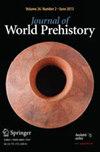大规模移民和波利尼西亚人在新西兰的定居
IF 3.1
1区 历史学
Q1 ANTHROPOLOGY
引用次数: 56
摘要
本文将大规模移民的概念重新引入关于波利尼西亚人在新西兰定居的时间和性质的辩论中。对新西兰年代学的向上修正表明,人类在这片土地上出现的速度极快,在几十年内,在所有气候带都建立了定居点。我们表明,公元14世纪早期快速出现的强大考古特征是大规模移民事件的结果,而不是目前尚未确定的早期定居阶段人口逐渐增长的结果。大规模迁徙不仅与考古记录相符,而且也得到了分子生物学和遗传学最新发现的支持。它还为考古方法与土著毛利人和波利尼西亚人口述历史和传统之间接触的新阶段打开了大门。本文章由计算机程序翻译,如有差异,请以英文原文为准。
Mass Migration and the Polynesian Settlement of New Zealand
This paper reintroduces the concept of mass migration into debates concerning the timing and nature of New Zealand’s settlement by Polynesians. Upward revisions of New Zealand’s chronology show that the appearance of humans on the landscape occurred extremely rapidly, and that within decades settlements had been established across the full range of climatic zones. We show that the rapid appearance of a strong archaeological signature in the early 14th century AD is the result of a mass migration event, not the consequence of gradual demographic growth out of a currently unidentified earlier phase of settlement. Mass migration is not only consistent with the archaeological record but is supported by recent findings in molecular biology and genetics. It also opens the door to a new phase of engagement between archaeological method and indigenous Maori and Polynesian oral history and tradition.
求助全文
通过发布文献求助,成功后即可免费获取论文全文。
去求助
来源期刊

Journal of World Prehistory
Multiple-
CiteScore
5.30
自引率
0.00%
发文量
8
期刊介绍:
Aims and scopeJournal of World Prehistory is an international forum for the publication of peer-reviewed, original treatments of the prehistory of an area or larger region. It was founded nearly thirty years ago with the remit of providing researchers, instructors and students with timely and authoritative research syntheses from all fields of archaeology. Journal of World Prehistory continues to lead in this field. Our classic articles may be 20,000 or 25,000 words long, as appropriate (excluding their extensive bibliographies). Since 2008 they have been joined by shorter (around 10,000 words), position pieces, which provide in-depth, thoughtful development of data and concepts, including interventions in controversies that unfold in our pages. These, written in a fashion interesting and accessible to all archaeologists, are often paired with a longer treatment in a single volume. In addition, readers now benefit from thematic special issues and double issues, in which a number of leading authors deal with a key theme in world prehistory, such as the origins of metallurgy (2009, volumes 22: 3 and 4), or the East Asian Neolithic (2013, in preparation). All papers are available first online, followed by the print edition. We aim to be truly global in coverage, with recent articles dealing, inter alia, with Amazonian lithics, the late Jomon of Hokkaido, the Bronze Age in Southeast Asia, the Neanderthal settlement of Doggerland, Neolithic networks in Western Asia, younger Dryas Paleo-Indian adaptations, and state formation in the Horn of Africa. Articles benefit from multi-language abstracts where appropriate, and we work closely with authors who do not have English as a first language to present major syntheses in a clear and concise way to an international audience. Traditionally, JWP focuses on earlier periods, but it includes the beginnings and early development of complex societies, and our understanding of ‘prehistory’ is broad and inclusive: for guidance on chronological scope, as well as our calendrical conventions, see the editorial article ‘Prehistory vs. Archaeology: terms of Engagement’ http://www.springerlink.com/content/346142p032604447/ Our unique remit means that we do not encourage the submission of unsolicited papers; rather, specific proposals are encouraged and then guided prior to independent peer review. Our aims and the way we fulfil them, with close contact with authors throughout the publication process, mean that JWP is not a venue for the simple and rapid dissemination of new results. Whilst we expect scholarship to be current, with syntheses including much new data, our readers look to us for definitive area/period coverage that will have continuing value.If you are proposing an article or special theme for Journal of World Prehistory, please read the Instructions for authors.Rated ''A'' in the European Reference Index for the Humanities (ERIH)?Journal of World Prehistory is rated ''A'' in the ERIH, a new reference index that aims to help evenly access the scientific quality of Humanities research output. For more information visit http://www.esf.org/research-areas/humanities/activities/research-infrastructures.htmlRated ''A'' in the Australian Research Council Humanities and Creative Arts Journal List. For more information, visit: http://www.arc.gov.au/era/journal_list_dev.htm
 求助内容:
求助内容: 应助结果提醒方式:
应助结果提醒方式:


